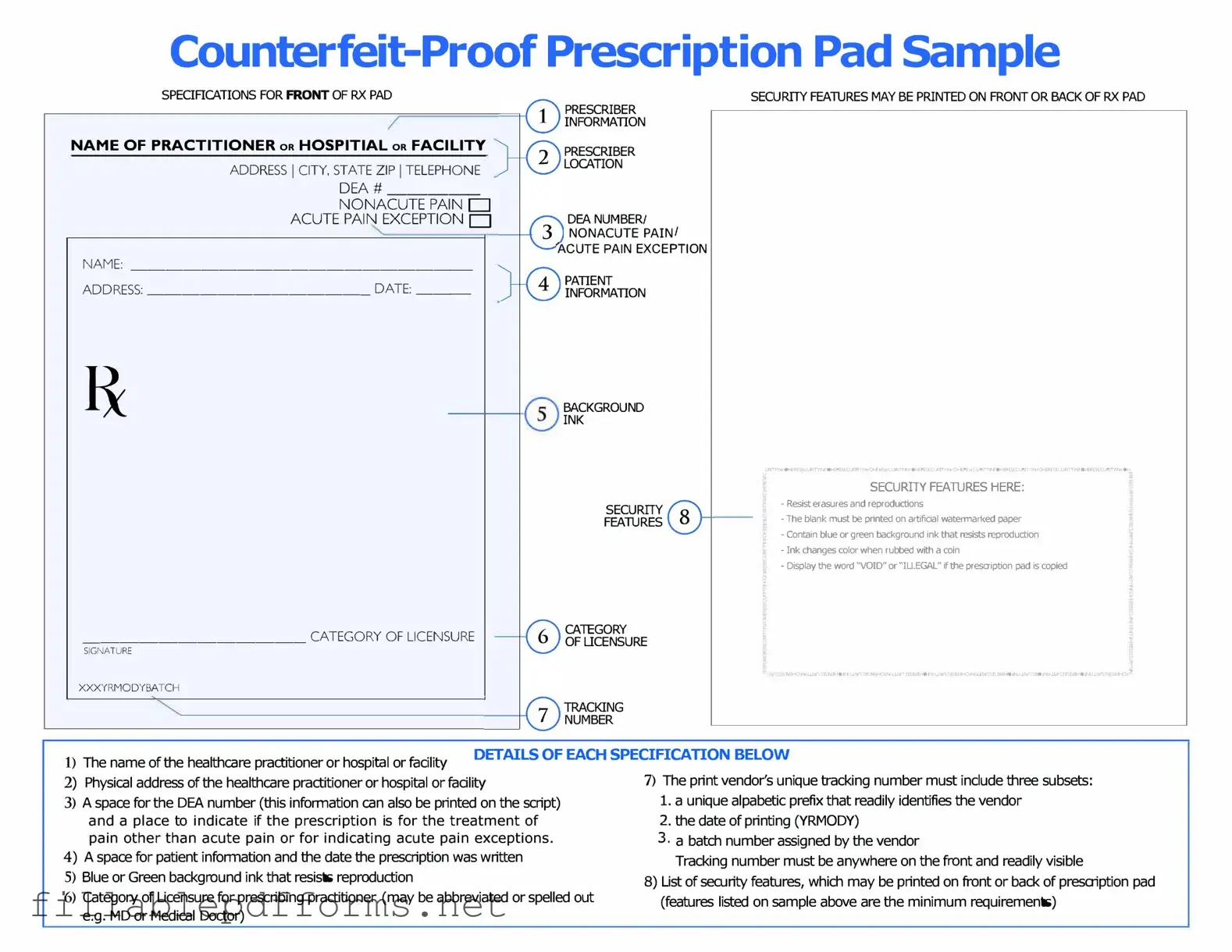The Prescription Pad form serves as a critical tool in the healthcare system, facilitating the process of prescribing medication to patients. This form typically includes essential information such as the patient's name, date of birth, and contact details, which help ensure that prescriptions are accurately matched to the right individuals. Additionally, it contains sections for the prescribing healthcare provider’s information, including their name, contact number, and license number, which is vital for verifying the legitimacy of the prescription. The form also outlines the specific medication being prescribed, including the dosage, quantity, and instructions for use, thereby providing clear guidance for both the patient and the pharmacist. Furthermore, many Prescription Pad forms incorporate fields for refills, allowing healthcare providers to specify how many times a patient can obtain the medication without needing a new prescription. This structured approach not only enhances patient safety but also streamlines communication between healthcare professionals and pharmacies, ultimately contributing to more effective patient care.
